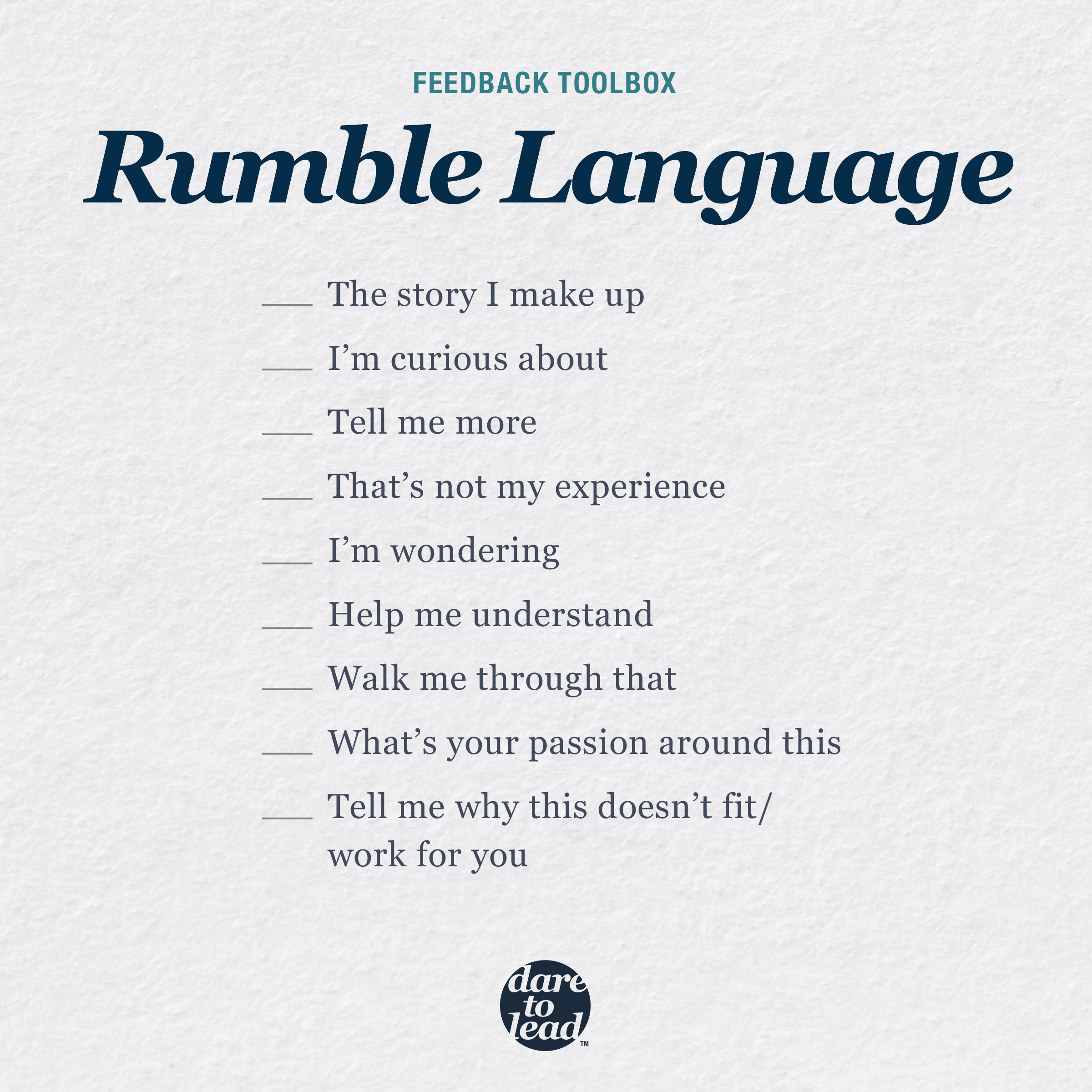Adapted from Dare to Lead
At the heart of daring is a deeply human truth that is rarely acknowledged: Courage and fear are not mutually exclusive. Most of us feel brave and afraid at the exact same time. We feel vulnerable. Sometimes all day long. During those moments, when we’re pulled between our fear and our call to courage, we need shared language, skills, tools, and daily practices that can support us through the rumble.
The word rumble has become more than just a weird West Side Story way to say, “Let’s have a real conversation, even if it’s tough.” It’s become a serious intention-setter and a behavioral cue or reminder.
A rumble is a discussion, conversation, or meeting defined by a commitment to lean into vulnerability, to stay curious and generous, to stick with the messy middle of problem identification and solving, to take a break and circle back when necessary, to be fearless in owning our parts, and, as psychologist Harriet Lerner teaches, to listen with the same passion with which we want to be heard. More than anything else, when someone says, “Let’s rumble,” it cues me to show up with an open heart and mind so we can serve the work and each other, not our egos.
Open hearts and open minds are critical if we want to be brave. Remember, it’s not fear that gets in the way of courage—it’s armor. It’s the way we self-protect, shut down, and start posturing when we’re in fear.
When I feel myself reaching for my favorite armor (perfectionism, anger, being the knower, trying to control, emotional intensity, getting critical), I try to remember that the antidote to armoring up is staying curious.
Here’s a cheat sheet I put together of rumble starters. They keep my heart and mind open and the conversations productive and brave.

